Abstract
Arsenic determination was carried out on hair, urine, and blood samples taken from groups of 10-year-old boys, each numbering 20 to 25 individuals, residing in a region polluted by arsenic. In all the examined materials considerably elevated concentrations of arsenic were found. The relation of the observed levels of arsenic to the distance of the place of residence up to a distance of more than 30 km from the source of the emissions was studied. On the basis of the results obtained, the most advantageous material for estimation of nonoccupational exposure to arsenic seems to be hair, in spite of some problems with the decontamination procedure involved. Considerable variability among individual arsenic values in the hair makes group examination a necessity. Hearing changes were analyzed in a group of 56 10-year old children residing near a power plant burning local coal of high arsenic content. The results of both audiometric and clinical examination were compared with those of control group numbering 51 children of the same age living outside the polluted area. The highly standardized audiometric and clinical examination were completed with a questionnaire analysis concerning the personal medical histories of the children. The obtained data were elaborated statistically by means of the χ2– test.
In the case of air conduction, important hearing losses were found at frequencies of 125, 250 and 8000 Hz, especially at the lowest frequency range. Significant degrees of hearing loss were found in bone conduction as well as in the corresponding ranges of frequencies. The high statistical significance of the hearing impairments found points to very low probability of their being only an “accidental” finding. The possibility of toxic damage to the ear cannot yet be excluded.
Full text
PDF
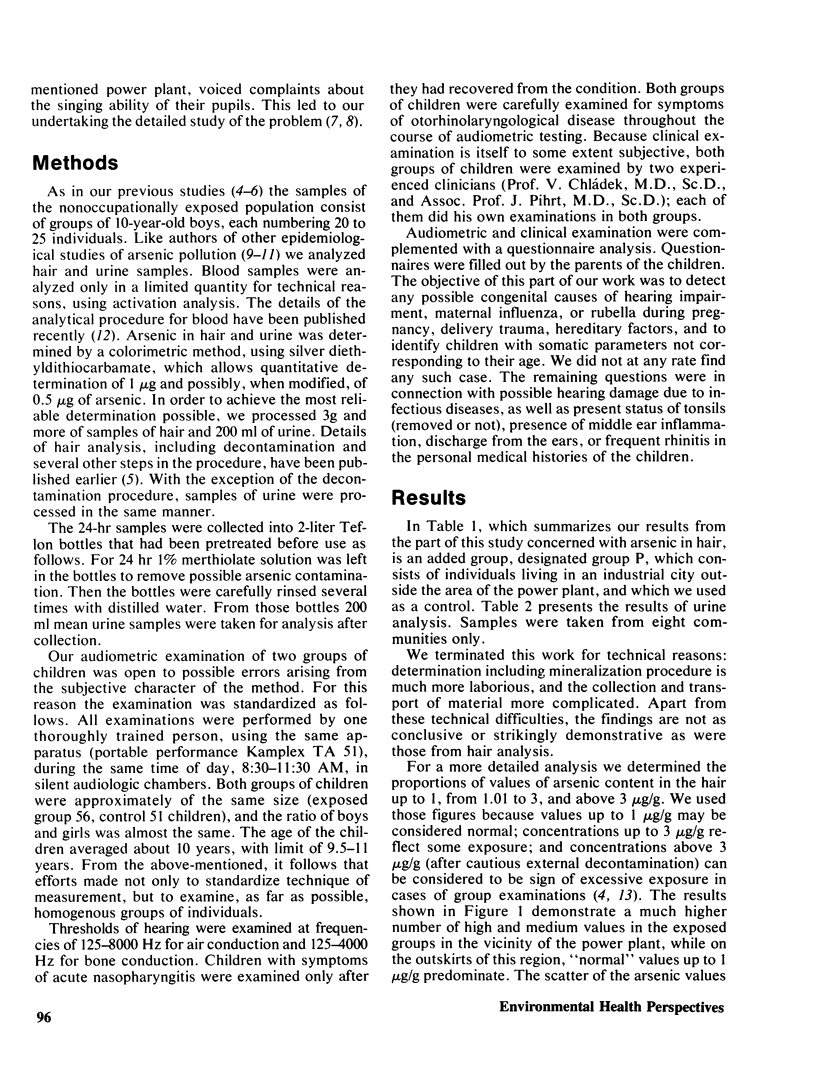
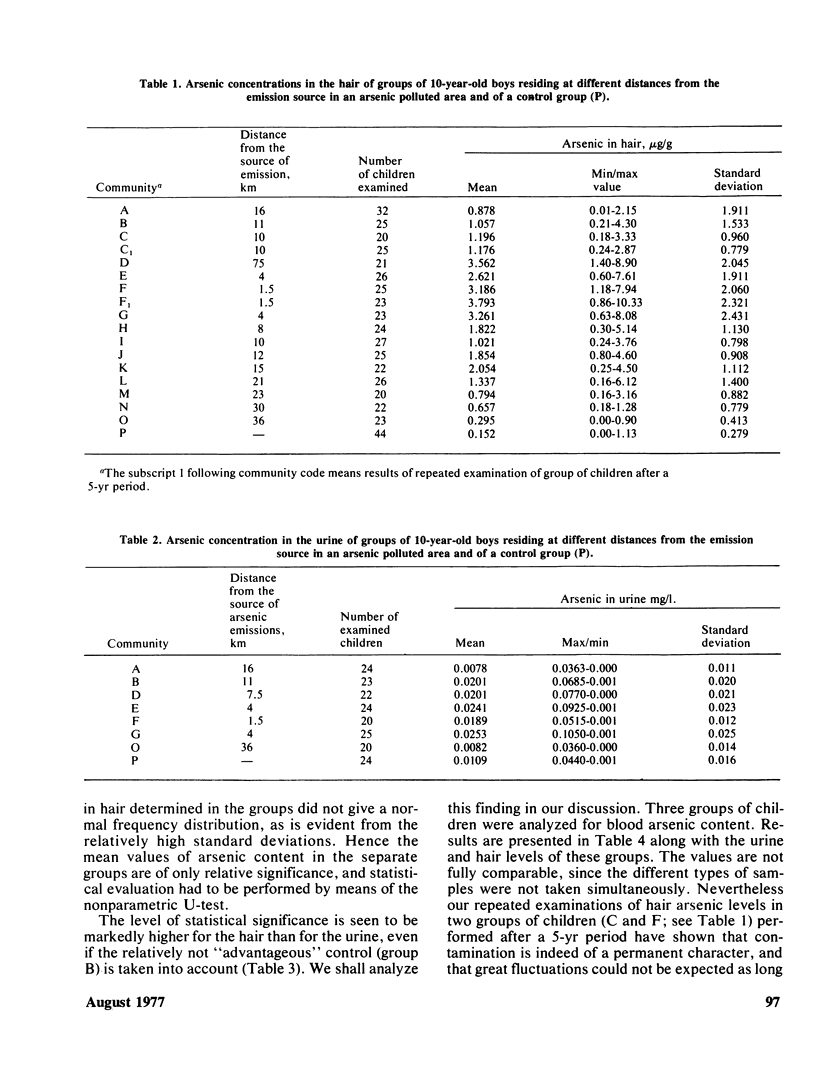
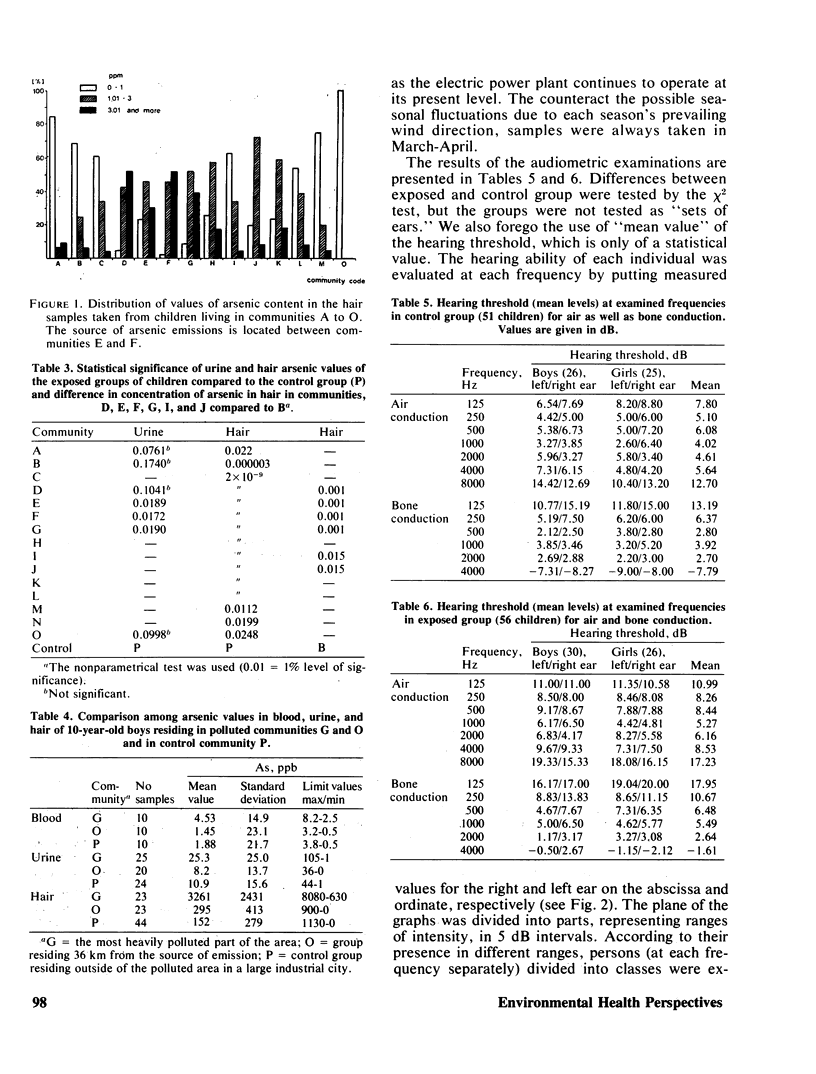
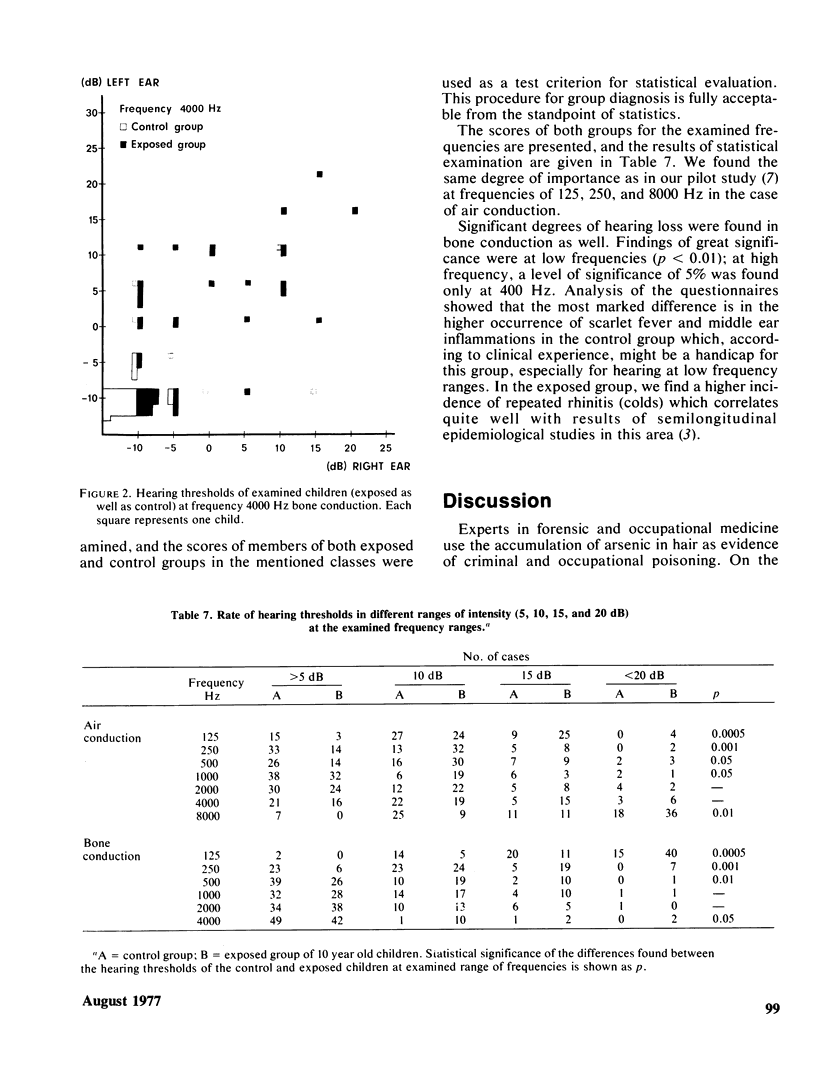
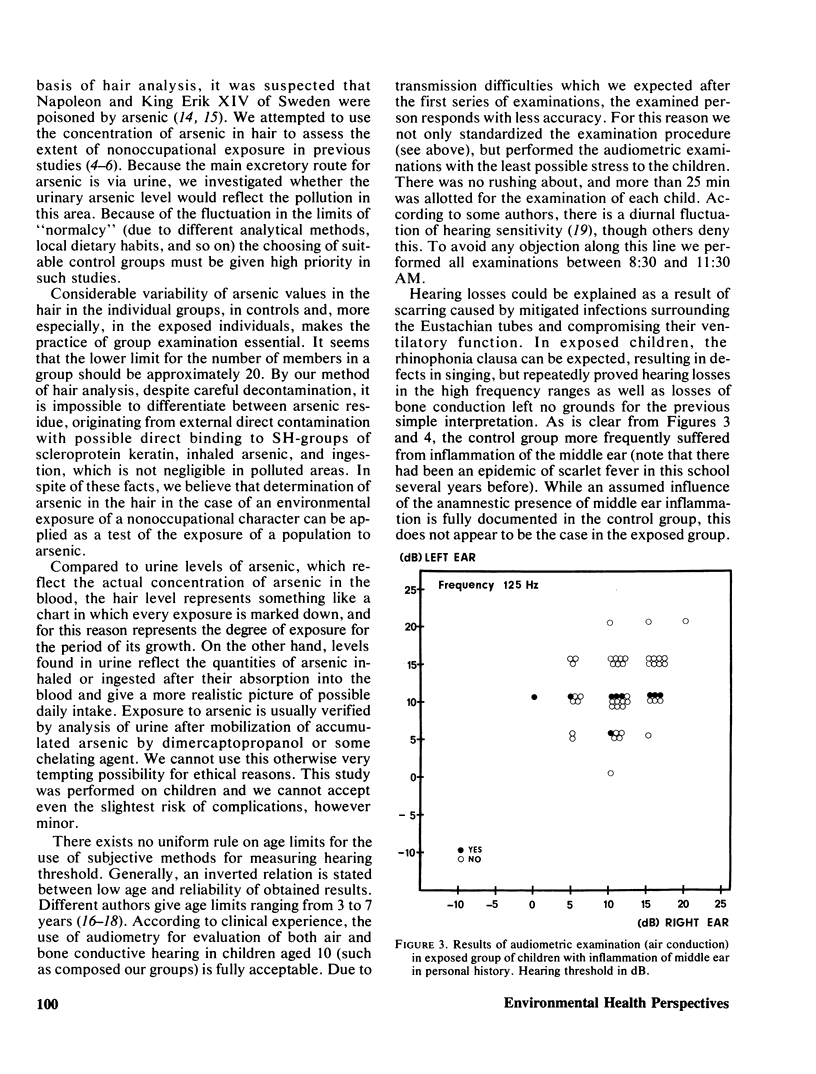
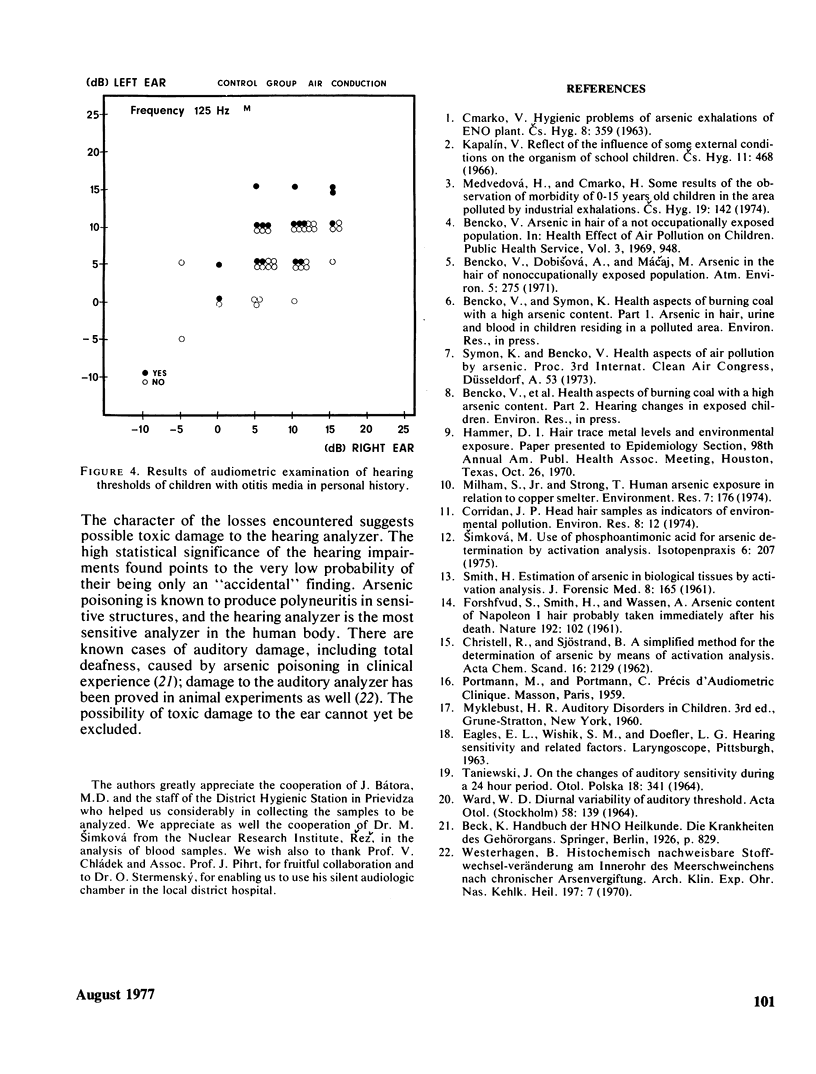
Selected References
These references are in PubMed. This may not be the complete list of references from this article.
- Bencko V., Dobisová A., Mácaj M. Arsenic in the hair of a non-occupationally exposed population. Atmos Environ. 1971 Apr;5(4):275–279. doi: 10.1016/0004-6981(71)90095-3. [DOI] [PubMed] [Google Scholar]
- Corridan J. P. Head hair samples as indicators of environmental pollution. Environ Res. 1974 Aug;8(1):12–16. doi: 10.1016/0013-9351(74)90059-0. [DOI] [PubMed] [Google Scholar]
- SMITH H. Estimation of arsenic in biological tissue by activation analysis. J Forensic Med. 1961 Oct-Dec;8:165–171. [PubMed] [Google Scholar]
- WARD W. D. DIURNAL VARIABILITY OF AUDITORY THRESHOLD. Acta Otolaryngol. 1964 Aug-Sep;58:139–142. doi: 10.3109/00016486409121370. [DOI] [PubMed] [Google Scholar]


